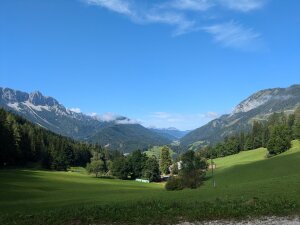
Published: | By: Christoph Grützner
Lesach Valley near Untertilliach
Image: Christoph GrütznerIn low strain-regions such as the European Alps, recurrence intervals for surface-rupturing earthquake on individual faults are usually very long and may reach up to tens of thousands of years. This poses a challenge for dating past earthquakes, because sediments deformed by earthquakes are often missing due to the glaciations, and the widely-used radiocarbon method is limited to the last 50,000 years or so anyways. Therefore, we directly date the fault gouge of three main faults in the Eastern Alps, assuming that frictional heating during large earthquakes will have caused a brief temperature rise. We applied optically stimulated luminescence (OSL) and electron spin resonance (ESR) dating to find out which segments of the Periadriatic Fault (PAF) System, the Lavanttal Fault, and the Šoštanj Fault have had surface‐rupturing earthquakes during the Quaternary. We can show that the southern section of the Lavanttal Fault is the least active of the three, while the Šoštanj Fault hosted large earthquakes in the last few hundred thousand years, possibly as recent as 30 ka ago.
Reference
Prince, E., Tsukamoto, S., Grützner, C., Bülhoff, M. & Ustaszewski, K. (2025): Deciphering Pleistocene fault activity in the Eastern Alps: Dating fault gouges with electron spin resonance and optically stimulated luminescence. Tectonics, 44, e2024TC008662, https://doi.org/10.1029/2024TC008662External link. OPEN ACCESS!
